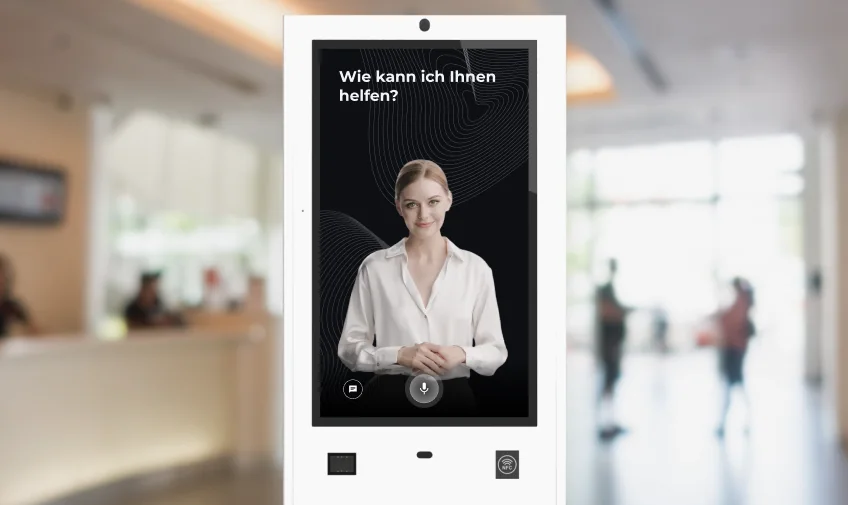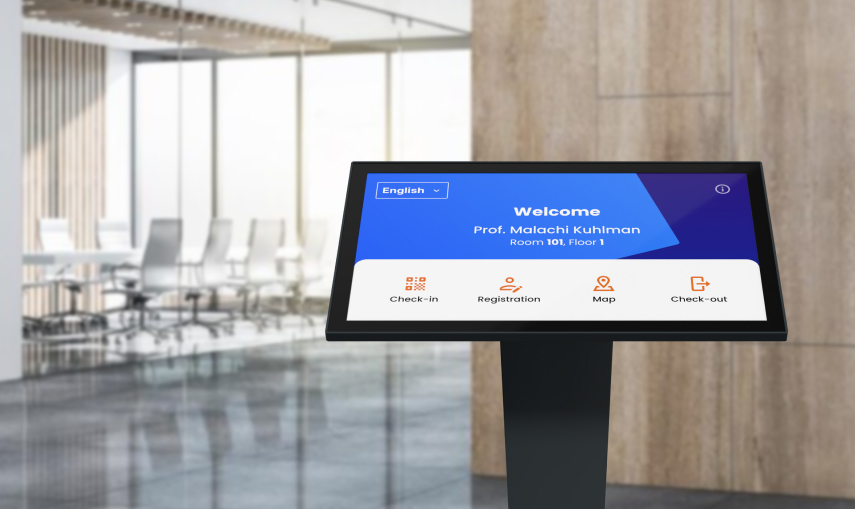
As businesses enter 2025, understanding the latest digital signage trends is crucial for adapting strategies and seizing new opportunities.
At friendlyway, with over 25 years of experience delivering cutting-edge digital signage software and hardware, we have been at the forefront of industry innovation. This year, we’ve actively participated in various exhibitions and events, including the Self-Service Innovation Summit, Global Security Exchange, GMCCC Conference, and others, sharing insights with leading industry experts.
Drawing from this wealth of knowledge and expertise, we’ve identified the top digital signage trends set to dominate in 2025. Join us as we explore these transformative trends and discover how your company can stay ahead in the dynamic world of digital signage.
The Industry’s Steady Growth Continues
The ongoing expansion of the digital signage sector isn’t merely a fleeting fad but rather an enduring reality reflected in multiple reports by industry observers. The industry has been on an impressive growth trajectory for the past few years, and all indicators point to the persistence of this momentum.
For instance, Grand View Research valued the global market for digital signage at USD 26.76 billion in 2023 and expected it to exhibit a remarkable Compound Annual Growth Rate (CAGR) of 8.1% in the forecast period of 2024-2030. These figures highlight the technology’s vast untapped potential.
But why should we believe that the digital signage industry will continue to grow? Several reasons stand behind our confidence.
Increasing Demand: Whether in retail, the public domain, hospitality, or various other sectors, there’s an ever-growing hunger for digital signage capabilities. According to Digital Signage Today, 60% of retailers without digital signage plan to invest in it within the next two years, indicating a significant market expansion.
friendlyway may have the perfect solution to drive your in-store sales.
Technological Development: The continuous evolution of display technologies drives the industry to new heights. Innovative products like transparent OLED displays, augmented reality, and AI-powered content optimization reshape the digital signage landscape. The growing demand for high-resolution 4K and 8K displays further accelerates this growth.
Commercial Effectiveness: Digital signage is revolutionizing retail, with over 70% of American consumers more likely to visit stores that utilize it (see the data below). This technology goes beyond displaying information; it creates engaging, immersive customer experiences that can impact business outcomes.

Source: Digital Signage Today
So, it’s not just optimism; our confidence is grounded in industry consistency, increasing demand, technological innovations, and the financial impact of digital signage on businesses and consumers. While any sector of the economy is subject to unforeseen events and market fluctuations, all indicators suggest a bright and promising future for the digital signage industry.
Key Trends in Digital Signage for 2025
Trend 1: Cloud dominates the industry
Cloud technology’s emergence has revolutionized digital signage, a trend we anticipate will continue to prevail in 2025 due to multiple factors:
Remote content management: You can manage digital content from any place connected to the internet. For businesses with multiple locations, this flexibility allows instant content updates and message fine-tuning across their entire digital signage network.
Scalability: With cloud solutions, the sky’s the limit. You can effortlessly expand or reduce screens, customize your content, and introduce new features. Being adaptable is vital in a business world that never stops evolving.
Cost reduction: Cloud technology is also more cost-effective. Its subscription-based model eliminates hefty upfront hardware costs. Expanding your digital signage network becomes financially manageable, focusing on scaling your business, not your budget.
Content scheduling and automation: You can schedule content for specific times, special days, or exciting events, ensuring that your viewers get the right content at the right time and turning your signage into an ever-relevant storyteller.
Improved reliability: Cloud solutions ensure minimal downtime through redundancy and backup options. Even offline, synchronized content keeps your digital signage operational, enhancing reliability.
Real-time platform updates: Stay updated with the latest features effortlessly, as cloud platforms automatically integrate new updates, sparing you the hassle of manual installations.
Accessibility and collaboration: Cloud solutions enable team members worldwide to access and update content simultaneously, streamlining content creation and management.
Support for diverse device types: As digital signage hardware diversifies, cloud platforms are increasingly capable of managing various devices, from large screens to interactive kiosks, maintaining consistency across formats.

Example of a digital signage and self-service cloud platform
Trend 2: Interactive signage enables self-service
The digital signage industry has seen an increasing popularity of deploying touchscreen displays and interactive kiosks for engaging content, personalizing viewer experience, and self-service. Applications range from product exploration and survey completion to wayfinding and remote customer support in unattended locations.
Whether it’s a self-ordering kiosk at a restaurant, an information desk in an office building, or a check-in kiosk in a hotel, interactive digital signage empowers users to access services conveniently and independently.
Beyond offering valuable self-service options to visitors and employees, interactive signage equips businesses with analytics tools that gather data about customer interactions, enabling them to create more effective marketing campaigns.

friendlyway Impress 43 kiosk with self-service options
Trend 3: AI drives productivity and personalization
Artificial intelligence (AI) is a game-changer in digital signage, bringing unprecedented efficiency to content creation and delivery processes. By partly automating the creation of high-quality text and visuals, it reduces the workload on editorial and design teams.
In environments where user privacy is respected, AI-driven digital signage can offer high levels of personalization. It intelligently tailors content to match viewer demographics and contextual factors, including location and time of day.
Moreover, an emerging suite of AI-enabled multilingual chatbots, talking avatars, and voice/gesture recognition technologies make interactions with digital signage more natural, allowing users to communicate in familiar and comfortable ways.
As a result, businesses embracing AI in digital signage are streamlining content creation and forging deeper connections. They unlock completely new levels of efficiency, personalization, and responsiveness.

friendlyway AI Assistant offers personalized live advice in any language
Trend 4: QR codes enable omnichannel communication
Beyond touchscreens and gesture controls, QR codes offer a new way for users to interact with displays. The value of this technology is in the enhanced omnichannel experience that syncing digital signage with mobile devices allows.
QR codes placed on the digital signage provide a quick and convenient way for viewers to access different information. After scanning the code with their smartphone, users can instantly view related websites, videos, product details, promotions, or other relevant content.
Moreover, QR codes can serve as a direct call to action, prompting users to download an app, join a loyalty program, or buy the displayed product or service.
The technology’s contactless nature promotes hygiene and safety — a consideration in post-pandemic times that is no less important than the engagement and interactivity aspects.

friendlyway Luminum 43 kiosk with a check-in option via a QR code
Trend 5: Immersive displays, AR, and holograms emerge
Immersive displays, Augmented Reality (AR), and holograms are emerging as transformative forces in digital signage. Offering businesses unique ways to engage audiences and capture their attention, these technologies help differentiate brands.
For example, advertisers can use large-scale immersive installations in high-traffic locations to amaze potential customers or create a memorable environment while promoting products and services. The Sphere in Las Vegas offers a recent striking example.
The Las Vegas Sphere uses immersive signage capabilities. Source: Insider News
Holographic ads are also becoming more prevalent in digital signage. These ads use holographic technology to create 3D objects that appear to float in mid-air, which can be eye-catching and attention-grabbing.
Incorporating AR into digital signage can significantly enrich shopping experiences via virtual try-ons and product demos. Shoppers can explore products in detail by visualizing different sizes, colors, and configurations before buying them. See how a 3D & AR configurator works in the video below.
Example of AR-enabled product visualization. Source: CanvasLogic
Competitive businesses need to stay ahead of the dynamic space of these emerging technologies promising to reshape the future of digital signage.
Trend 6: Peripherals offer more possibilities
Peripherals refer to additional devices or components complementing digital signage solutions, enhancing functionality and interaction. Components like motion sensors, NFC (Near Field Communication), cameras, and the already mentioned QR code readers turn passive viewing into interactive experiences.
Various sensors (light, temperature, proximity, etc.) and IoT devices enhance the capabilities of digital signage systems. They enable dynamic content delivery based on real-time data, such as showing specific ads depending on the weather or adjusting content depending on the number of people present.
Printer integration with digital signage allows real-time printing of coupons, tickets, receipts, and other personalized materials. Scanners complement digital signage by enabling interaction through barcodes, RFID tags, or personal IDs for event check-in, ticket validation, or inventory management. Biometric readers, including fingerprint and facial recognition scanners, provide further security and personalization.
Peripherals facilitating mobile connectivity, such as Bluetooth beacons, enable communication between digital displays and users’ smartphones, providing location-based content or additional information. Integrating these and numerous other components offers endless opportunities to create more dynamic and effective digital signage experiences.

friendlyway Empire 22 Pro kiosk with a thermal printer, card dispenser, keyboard, NFC scanner, and more
Trend 7: Software integration is a must
Digital signage has evolved into a sophisticated technology platform, far surpassing its original role as a display tool. Seamless integration with various data sources, such as web applications, external news feeds, social media streams, or other services, enables the broadcasting of diverse content.
When using a cloud platform for digital signage, such as the one we have at friendlyway, you can integrate pre-built modules or widgets, including a video chat, wayfinding maps, and visitor management, into your content to expand user engagement capabilities.
Digital signage integration with third-party and in-house systems, such as CRM, ERP, and product documentation sources, enhances internal communication in corporate settings. It provides safe access to vital business information, displayed conveniently on digital signage devices while maintaining the required level of information security.
All these advancements mean that digital signage can offer a broader range of valuable content, resulting in a more holistic, consistent, and smoother experience for customers and employees interacting with these displays.
Implement the latest trends in digital signage with a trusted partner.
Other Observations
While not as dominant, several emerging trends in digital signage are worth noting for their impact:
- Sustainable Digital Signage: Environmental considerations have been at the forefront of many businesses’ decisions in recent years. Energy-efficient displays and eco-friendly production practices are becoming more popular.
- Uncompromising Security: Recent cases of cyberattacks have underscored the necessity of robust security measures for safeguarding digital assets. Practices like implementing encryption, regular software updates, firewalls, and role-based access controls help protect systems against hacking and ensure the integrity of the displayed content.
- Personal Data Protection: Digital signage systems often gather, process, and store data about viewers, such as demographics, engagement metrics, or even biometrics for targeted content. Ensuring that handling of this sensitive information complies with relevant regulations (like GDPR or CCPA) is essential to prevent data breaches and protect user privacy.
Leveraging Trends for Business Success
In the dynamic realm of digital signage, the trends we’ve identified promise to influence business strategies in 2025 and beyond. These insights are not mere speculation; they stem from our extensive experience and keen understanding of the industry’s growth, technological innovations, and evolving consumer behaviors.
Harness these trends to your advantage by partnering with friendlyway. As seasoned software and hardware solution experts, we are well-equipped to enhance your existing digital signage and self-service infrastructure or build one from the ground up.
Schedule a free consultation today.




